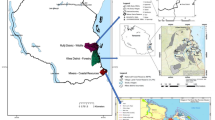Abstract
It is now widely accepted that members of the public should be involved in environmental decision-making. This has inspired many to search for principles that characterize good public participation processes. In this paper we report on a study that identifies discourses about what defines a good process. Our case study was a forest planning process in northern New England and New York. We employed Q methodology to learn how participants characterize a good process differently, by selecting, defining, and privileging different principles. Five discourses, or perspectives, about good process emerged from our study. One perspective emphasizes that a good process acquires and maintains popular legitimacy. A second sees a good process as one that facilitates an ideological discussion. A third focuses on the fairness of the process. A fourth perspective conceptualizes participatory processes as a power struggle—in this instance a power play between local landowning interests and outsiders. A fifth perspective highlights the need for leadership and compromise. Dramatic differences among these views suggest an important challenge for those responsible for designing and carrying out public participation processes. Conflicts may emerge about process designs because people disagree about what is good in specific contexts.
Similar content being viewed by others
Author information
Authors and Affiliations
Rights and permissions
About this article
Cite this article
WEBLER, T., TULER, S. & KRUEGER, R. What Is a Good Public Participation Process? Five Perspectives from the Public. Environmental Management 27, 435–450 (2001). https://doi.org/10.1007/s002670010160
Issue Date:
DOI: https://doi.org/10.1007/s002670010160




